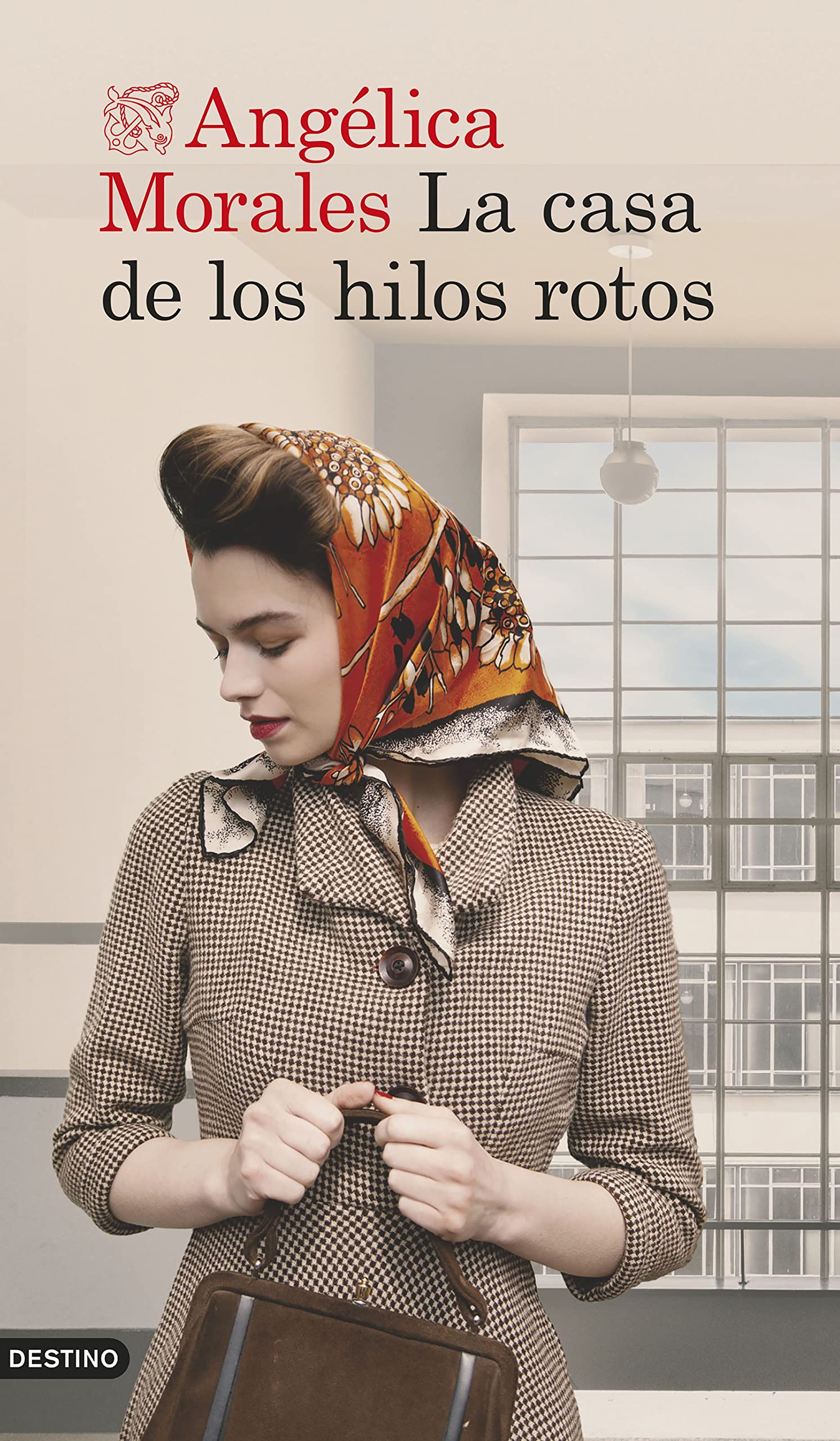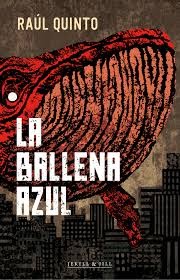
About the book
A song to freedom, art and the memory of all forgotten women.
The story of Otti Berger, a creative and independent woman who fought against Nazi barbarism.
«Life is a loom of very vivid threads that come together to form what we call destiny. From the moment I came across the figure of textile designer Otti Berger, I was fascinated. Not only because of her immense talent and overwhelming personality, but also because in addition to having to fight against a hostile world and many obstacles, she was deaf since childhood, which moved me enormously. I admired her for her willpower, for her ability to excel, which made her the most outstanding textile designer of the Bauhaus. Her threads joined mine and together we began to weave this story. With Otti, in addition to admiration, I was united by a feeling of childhood. Since I was a child I have known what it is like to be on the side of minorities, I liked to inhabit that periphery of love, that darkness where everything hurts and it was difficult to breathe. This is a story of friendship, avant-garde art, love, and search.” ANGELICA MORALES
Otti Berger deserves a place in History in his own right, a novel in which the broken threads of his life finally compose a splendid fabric.
The House of Broken Threads is a novel based on the life of the artist and textile designer Otti Berger, an important figure in the revolutionary German art school Bauhaus, who, like many women of her time, ended up somehow silenced. by the history.
The text is intended to be a tribute to his work. A woman, communist, of Jewish descent, with a fascinating artistic, work and emotional career, Berger was a victim of History writ large.
Otti’s past is intertwined in the novel with the current story of Montserrat Ribó and her daughter Penélope. It is she who discovers the secret diaries of her great-grandmother Mercè Ribó in the family farmhouse in Girona, a fact that will completely change her life and that of the rest of her family. Line after line of the diary, Penélope weaves the peculiar relationship of Otti and Mercè, two women who united their lives in a turbulent time, when barbarism began to sharpen its claws.
Penelope will discover that her great-grandmother Mercè Ribó, an upper-class Barcelonan passionate about art and the Bauhaus movement, traveled to Dessau to fulfill her dream, meeting there with the enigmatic Otti Berger, from whom she would not be separated until start of the civil war in Spain. Some time later, fate would intertwine their lives again in the Auschwitz concentration camp.
The House of Broken Threads is a song to freedom, to friendship, to art, to love, to the memory of all those forgotten women. Broken threads that are reborn in these pages so that the reader can walk through their lives again.
THE BAUHAUS, CHARACTERS
HISTORISTS WHO INHABIT THE NOVEL
OTTI BERGER. Born in 1898 in the heart of the then Austro-Hungarian Empire, in a small Hungarian town called Vörösmart, she was the daughter of a wealthy Jewish family.
From a very young age she was alert and restless and, although she became deaf at an early age, she always showed great strength and desire to improve.
A lover of the loom that his mother already managed, he entered the world of art with passion, studying, after his training in Vienna, at the Royal Academy of Art in Zagreb and later entering the Bauhaus, in its new headquarters in Dessau. She soon stood out among the rest of the students for her creative and research capacity, becoming a teacher in the weaving workshop as soon as she graduated.
The Bauhaus for her was her home, a world full of light and creativity, a bubble where nothing mattered except the search for oneself and the inner artistic impulse.
An intelligent, cultured, restless woman, she fell madly in love with the architecture professor Ludwig Hilberseimer, a passionate love that did not even end with their separation after the outbreak of the Second World War, which led to Otti’s death in the concentration camp. of Auschwitz.
Otti Berger represents the woman artist who fights to make her way on her own merits, she symbolizes constant work, creativity, camaraderie, faith in art as a life project. At the Bauhaus school, Otti lived her best years: she loved, experimented and learned enough so that, at the end of her time at the School, she was able to open her own workshop in Berlin: Atelier de fabrics y life. She was the first woman to patent her designs. Always faithful to her ideals, she fought for her voice to be heard, even if her voice was extinguished in Auschwitz.
LUDWIG HILBERSEIMER. Architect, close friend of the last director of the Bauhaus, Mies van der Rohe. Of communist ideas. A man dedicated to his work. Faithful. Consequent. He fought against the Nazi regime and, although he never joined the communist party, he was always on the front line of the fight, which would lead him to lose some important jobs. He joined the Bauhaus in its first stage and devoted himself to it until the end. Otti Berger was his great love. When he learned that he had died in Auschwitz he made sure that his work saw the light. He is undoubtedly the keeper of his legacy.
WALTER GROPIUS. Founder of the avant-garde Bauhaus School of Art and Design, he was a key figure for Otti Berger whom he met through her aunt, the distinguished lady Augusta Novak, when Gropius had just founded the school. At first for Otti she was a ghost, someone who came and went in the shadows, until she entered school and the relationship became closer. Gropius always trusted Otti’s talent and artistic ability, recommending her work on many occasions. In the novel he will play an important role due to his peculiar relationship with Mrs. Augusta Novak.
ISE GROPIUS. She was the wife of Walter Gropius and a great friend of Otti until the end of her days. When Otti had to return to his village to care for his sick mother and the Second World War was at its peak, Ise and her husband Walter Gropius, as well as a large number of former Bauhaus professors who emigrated to the United States, did everything they could. so that Otti could take refuge in America and get rid of the Nazi threat.
Otti’s situation was in danger because she was Jewish, because she was an artist and because she was a communist. Despite all her diplomatic attempts, Ise failed and Otti finally died in the Auschwitz concentration camp. Ise, along with Hilberseimer, Otti’s fiancé, would do her best to ensure that Otti’s work was very present in the Bauhaus exhibition at the Moma in New York and her name could shine.
PAUL KLEE AND VASILI KANDISKY. Two great avant-garde painters and Bauhaus professors from the beginning. Revolutionaries, friends and competitors, they were a reference for Otti Berger in his work, especially Paul Klee when dealing with color in his works. Both were dear friends of our protagonist and remained by her side throughout her career, supporting Otti Berger’s takeover as teacher and successor to Gunta Stolz in the weaving workshop.
GUNTA STOLZ. The first female Bauhaus professor to enjoy official recognition, she had to fight to get her place and the respect of her colleagues. Her life turned upside down when she married a young Jewish architecture professor and her friends began to turn their backs on him. Added to this was her poor relationship with the then director of the Bauhaus, Hannes Meyer, who was in favor of industrialization and mechanization, while Gunta defended artisanal work.
The constant professional friction combined with the time of political tension, her motherhood and her way of dealing with it freely (she took the baby to class and breastfed him in front of her students) cost her the enmity of some teachers. Adding to this discomfort was the fact that some Nazi-leaning students painted the door of her house with her blood, threatening and insulting her for having married a Jew.
Gunta was forced to leave the school, but not before proposing Otti Berger as her successor. There was a great friendship between the two women that would last until the end. For Otti Berger, Gunta was always a reference, her great teacher, the mirror in which to look at herself.
HANNNES MEYER AND MIES VAN DER ROHE. Hannes was Walter Gropius’s successor as head of the Bauhaus. A communist and very given to social politics, he took a left turn at the school at a time of political tension, when communists and Nazis clashed violently. He and Otti were great friends.
When Hannes left the direction, he was replaced by Mies van der Rohe, an elegant German architect and close friend of Professor Hilberseimer, who would become Otti Berger’s fiancé. Mies tried to save the Bauhaus in Dessau by seeking moderation and dialogue with local Nazi Party politicians, but he was forced to close it. Later he would open it again in Berlin, but as a private school. It would barely last open a year. Mies did not have a good relationship with Gunta Stolz, and when she left he placed her wife, the interior designer Lily Reich, in charge of the textile workshop. Lily barely paid attention to the workshop, it was actually Otti Berger and Annie Albers who were in charge of the classes and textile projects. With Lily Reich, Otti never managed to have a good relationship, precisely because she considered her an intruder in the weaving workshop that she loved so much.
ANNIE ALBERS AND GERTRUD ARNDT. They were both students of the Bauhaus and friends of Otti Berger. Annie Albers would be appointed teacher of the textile workshop along with Otti. Gertrud was considered one of the official photographers of the Bauhaus and she was Otti’s inseparable friend from the beginning until she finished the Dessau period. Then their paths parted permanently.
OTTO AND OSKAR BERGER. Otti brothers. Otto is the youngest of the family, also passionate like Otti about art and theater. He will be a fashion designer and Otti’s great supporter when she was in Berlin. Both have been accomplices since childhood. Oskar is the older brother, born from a previous marriage of his father. Oskar is a more grounded, more reasonable man, the heir to the family business, the grocery store that his father Lajos ran and his mother’s loom.
LAJOS AND IDA BERGER. They are Otti’s parents. Lajos is a traditional and hard-working man, with a grocery business, as well as other investments in his town, Vörösmart. He always supported Otti in her desire to study and enroll at the Bauhaus, while her mother Ida, in charge of the looms, was more reticent for fear that her daughter would suffer due to the her deafness. When Otti is about to emigrate to the United States, at the beginning of the Second World War, Ida falls seriously ill with cancer and Otti is forced to return to her hometown to take care of her, leaving her boyfriend Ludwig to care for her. leave for Chicago. This act of filial love will cost him her life.
Source: https://algunoslibrosbuenos.com/la-casa-de-los-hilos-rotos


